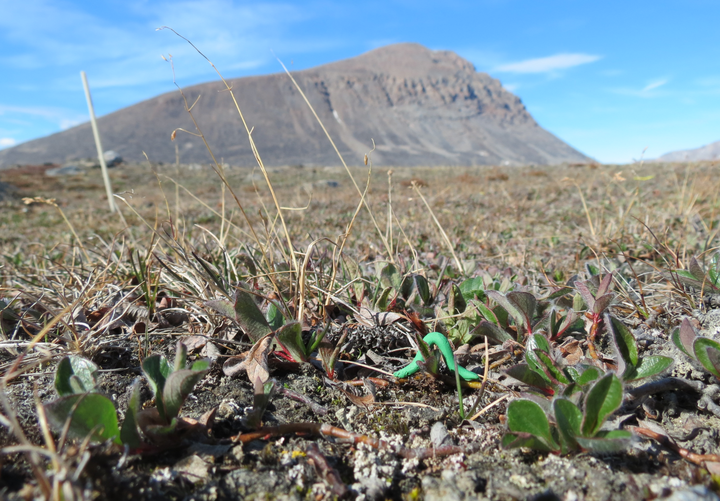Global-scale ecology
 ‘Dummy’ caterpillar in Zackenberg, Greenland (credit: Tomas Roslin)
‘Dummy’ caterpillar in Zackenberg, Greenland (credit: Tomas Roslin)Process-level ecological data are usually collected locally, making scaling to the landscape and global scale a dubious exercise. I’m collaborating with three projects that seek to remedy this deficiency by using global databases & distributed experiments.
COM(P)ADRE databases of matrix population models
In addition to building demographic models and parameterizing them with field data, I am a member of the Science Committee for the twin databases of matrix population models, COMPADRE and COMADRE. Our goal is to enable comparative demographic studies by assembling a comprehensive database of demographic models and their associated metadata, then making it publicly available along with tools to work with the data.
See our blog for highlights of recent papers that have resulted from this effort, or download the latest versions of each dataset here.
Geographic gradients in species interactions
Species diversity generally increases towards the Equator, and the extent to which this affects species interactions will have profound biogeographic and evolutionary consequences. Despite decades of local experimentation and extrapolation, we still lack a globally-coherent picture of interaction strength.
The Global Dummy Caterpillar Project deployed plasticine caterpillar mimics around the world to measure predation rates by multiple taxa, distinguished by mouth marks left in the plasticine. We found strong evidence of higher predation in the tropics with a parallel pattern over elevation with stronger predation in the lowlands.
PlantPopNet: Scaling up demography
Demographic models provide powerful insight into the life history processes that control individual fitness, population growth, and extinction risk. Demographic studies to-date are too poorly replicated in space and time to tease apart the complex ways that demographic processes respond to environmental variation—-this is a key gap in our understanding of fundamental population processes made more glaring in light of global change, elevated extinctions, and species invasions.
PlantPopNet is focusing on collecting demographic vital rates for a cosmopolitan plant, Plantago lanceolata, all over the world. By comparing individual performance across environments, we are beginning to understand how different life history processes respond to the environment and scale up to impact population dynamics.
I have established five replicate monitoring populations across a broad environmental gradient in California, from the mediterranean south to the mesic redwood forests of the north. These data will be pooled with ca. 25 other sites in the network to form the largest demographic database for any single species.